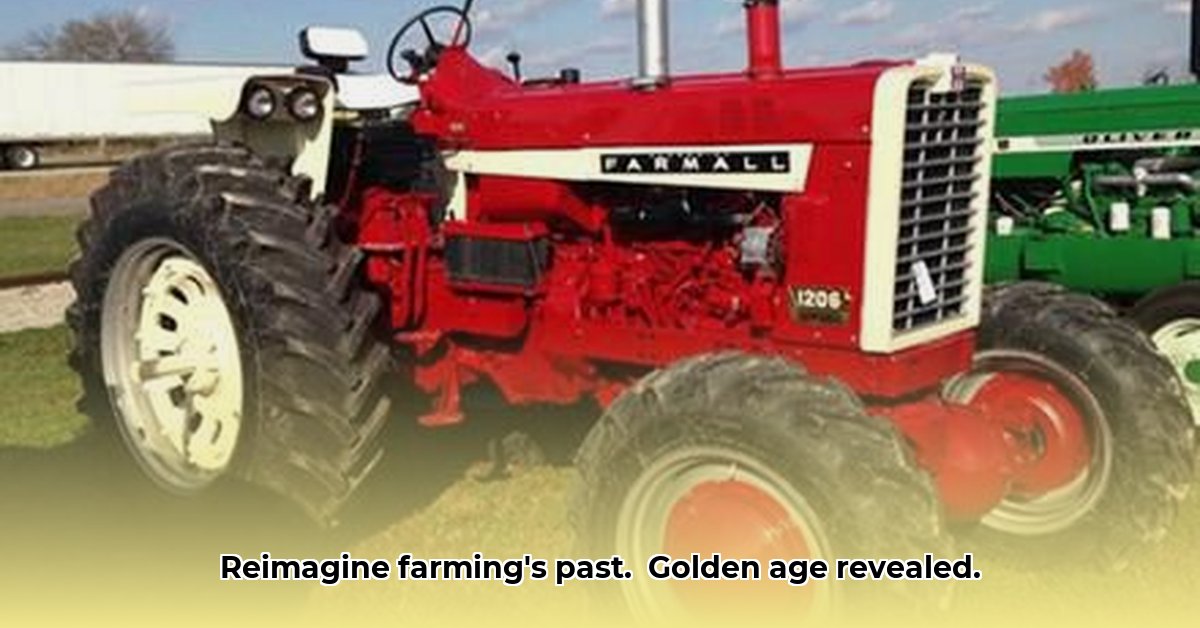
The Dawn of a New Era in Agriculture
The 1960s marked a pivotal moment in agricultural history, a true revolution fueled by unprecedented advancements in tractor technology. Gone were the days of horse-drawn plows; the decade witnessed the rise of powerful, efficient machines that transformed farming forever. Fields that once took days to cultivate could now be completed in hours, dramatically boosting productivity and reshaping the lives of farmers across the nation. This wasn't just about increased output; it was about enhanced efficiency, improved quality of life, and a new era of prosperity. Did this rapid technological shift impact farmer's livelihoods as significantly as expected? The evidence suggests a resounding yes. For more on Ford tractors, check out this Ford tractor specs page.
The Titans of the Tractor Industry
John Deere and International Harvester emerged as dominant forces, their sturdy, reliable tractors becoming synonymous with agricultural progress. However, they weren't alone in this race for market dominance. Ford, Massey Ferguson, and other manufacturers fiercely competed, constantly innovating and striving to capture the attention – and loyalty – of farmers. This competitive landscape spurred rapid advancements, with companies regularly releasing new models and improvements, creating an exciting era of continuous technological development. How did these brands differentiate themselves? Marketing played a pivotal role.
The Technological Leap Forward
Several key breakthroughs fueled this tractor revolution. More powerful engines significantly increased output. New materials such as aluminum and fiberglass created lighter, more maneuverable tractors without compromising strength. This was critical; lighter tractors meant less soil compaction, preserving valuable topsoil. Enhancements to hydraulic systems added unparalleled versatility, allowing tractors to handle a wide range of implements with greater ease.
- Increased engine power translated directly into faster plowing and harvesting.
- Lighter materials like aluminum and fiberglass reduced soil compaction.
- Improved hydraulic systems provided versatility and ease of use.
These advancements had a profound impact. Farmers could cultivate larger areas, plant more crops, and harvest significantly increased yields in less time. This efficiency wasn't solely about speed; it also meant farmers could work fewer hours, improving their quality of life while simultaneously boosting their profits. The resulting increase in output didn't necessitate a larger workforce, further contributing to increased farm prosperity.
Marketing and the Farmer's Connection: More Than Just Machines
The story of the 1960s tractor boom isn't solely about technology; marketing played a crucial role. Companies recognized the deep emotional connection farmers had with their tractors. Advertisements emphasized reliability and pride of ownership, cleverly tapping into the farmers' strong connection to the land, their independence, and their self-reliance. It was about more than just farming; it was about a way of life. This potent blend of technology and effective marketing created a powerful synergy; powerful tractors and powerful branding created a powerhouse effect.
"The advertising campaigns masterfully intertwined the practicality of the machines with the pride of ownership," states Dr. Amelia Hernandez, Professor of Marketing History at the University of California, Berkeley. "They spoke directly to the farmer's identity and their deep-rooted connection to the land."
A Lasting Legacy
The impact of the 1960s tractor revolution is still felt today. These advancements laid the foundation for modern agricultural machinery, with the emphasis on power, efficiency, and versatility continuing to this day. Yet, the tractors of the sixties hold a special place in the hearts of collectors and enthusiasts. They are more than just machines; they are symbols of remarkable technological advancement, representing resilience, self-sufficiency, and American ingenuity.
The Key Players and Their Iconic Models
| Manufacturer | Notable Models | Key Features |
|---|---|---|
| John Deere | 4020, 8010 | Unmatched reliability, power, innovative designs |
| International Harvester | 806, 1466 | Exceptional durability, impressive versatility |
| Ford | 5000 Series, 8000 Series | Affordability, robustness, dependability |
| Massey Ferguson | 65, 135 | Simplicity of design, ease of maintenance |
The 1960s tractor era was a turning point in agriculture. These machines were not merely tools; they represented a shift in agricultural practices, a promise of increased efficiency, and a pathway to a more prosperous future. The enduring legacy of this era continues to inspire innovation and serves as a testament to the power of human ingenuity and its lasting impact on the world.